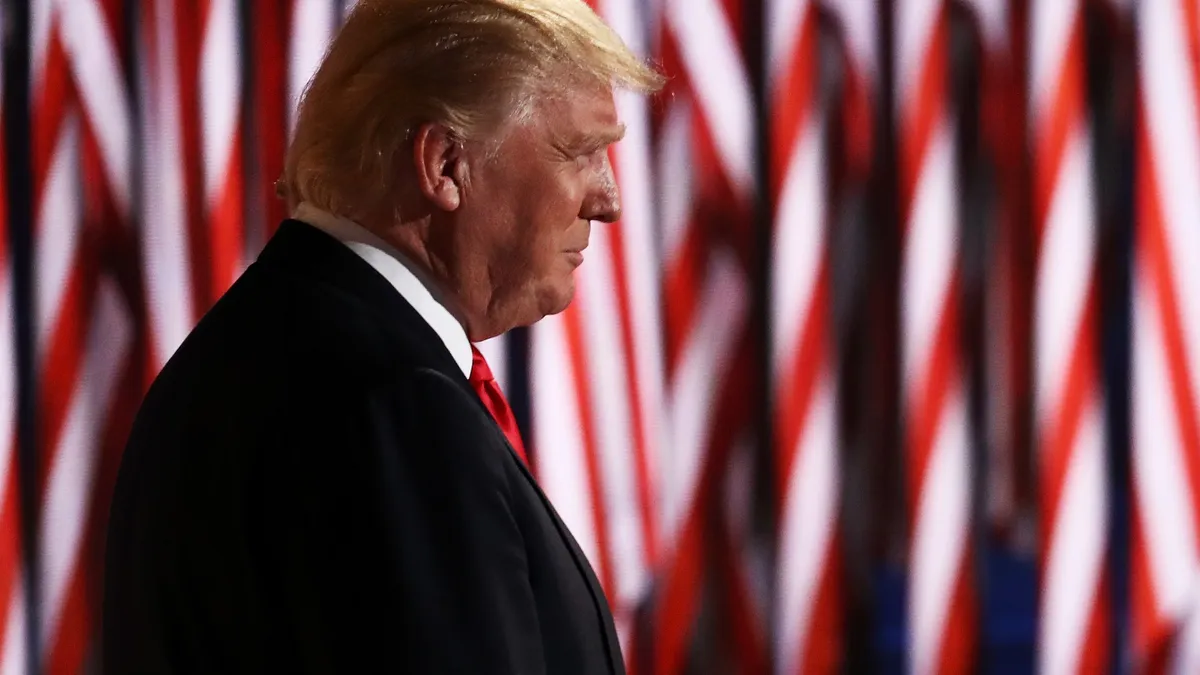UPDATE: May 10, 2019: Trade talks between the U.S. and China ended Friday without a deal, according to multiple news reports. Treasury Secretary Steve Mnuchin told CNBC the discussions were "constructive" but offered no further detail. The administration has not announced if or when the two nations will meet for another round of talks.
Dive Brief:
- Tariffs on $200 billion worth of imports from China rose from 10% to 25% Friday at 12:01 a.m. ET. China has threatened "necessary countermeasures," but as of Friday morning it's unclear what shape the retaliation will take.
- Goods in transit exported from China before May 10 are not subject to the new tariffs, according to a document in the Federal Register. The 25% duties are "effective with respect to goods (i) entered for consumption, or withdrawn from warehouse for consumption, on or after 12:01 a.m. eastern daylight time on May 10, 2019, and (ii) exported to the United States on or after May 10, 2019," the document states.
- The tariffs took effect as trade negotiations between the U.S. and China unfolded. In a series of tweets Friday morning, Donald Trump said the talks continue "in a very congenial manner" but said "there is absolutely no rush" to reach an agreement. Chinese Vice Premier Liu He, U.S. Trade Representative Robert Lighthizer and Treasury Secretary Steve Mnuchin met Thursday for trade talks and are expected to resume talks Friday, Reuters reported.
Dive Insight:
Trump offered sage advice to businesses as the tariff rate increased by 15%. "Waivers on some products will be granted, or go to new source!" he tweeted. "Build your products in the United States and there are NO TARIFFS!"
Going to a new source is a strategy a number of businesses have employed, though often that means moving to a supplier base in other parts of Asia rather than the U.S. Either way, a change of this magnitude is rarely a task measured in days or even weeks.
In light of the tariffs, Brooks Running plans to move the majority of its running shoe production from China to Vietnam.
GE Appliances Executive Director of Sourcing Rich Wrightington said the company has considered the possibility of finding new suppliers. He named Eastern Europe and Southeast Asia as "great places to look" and said GE has not found opportunities to move sourcing to the U.S. Wrightington said some existing suppliers have factories in multiple countries, allowing GE to stay with the same supplier but move sourcing out of China.
Moving sourcing is not always the most cost-effective option, though. Last year, a client for Maine Pointe conducted a series of "what-if" tariff scenarios before the 25% tariffs took effect and still found China was the lowest cost option.
Shifting sourcing to other nations in Asia also requires risk mitigation on the buyer's behalf for issues such as forced or child labor.
No matter what strategy businesses choose to mitigate tariffs, "the increase to 25% will have huge implications for their bottom lines while also likely requiring customers to share the economic burden," Lori Fox, vice president of customs brokerage services at American Global Logistics, told Supply Chain Dive.
The impact of higher #tariffs! pic.twitter.com/dax0ecPF4b
— jeroen blokland (@jsblokland) May 10, 2019
Countermeasures from China won't have as much of an effect on the overall U.S. economy, but it could be devastating to the U.S. agricultural industry. The American Soybean Association called the rise to 25% the "worst case" for U.S. soybean growers. The sentiment comes in stark contrast to Trump's series of tweets, in which he touted his trade policies as a boon to farmers.
Trump also said Friday "the process has begun" to place 25% tariffs on another $325 billion worth of Chinese imports, a threat he first made in a pair of tweets Sunday. At that point, nearly every good the U.S. imports from China would face a duty of 25%.
The National Retail Federation noted the possibility of a fourth tranche would result in another rush to import goods, just as U.S. ports saw in the third and fourth quarters of last year, before 25% tariffs were expected to take effect.
In a press release last month, Port of Long Beach Executive Director Mario Cordero said many warehouses on the West Coast are full with inventory that resulted from last year's tariff rush. Should another import rush happen, storage space may be in short supply for the incoming goods.














